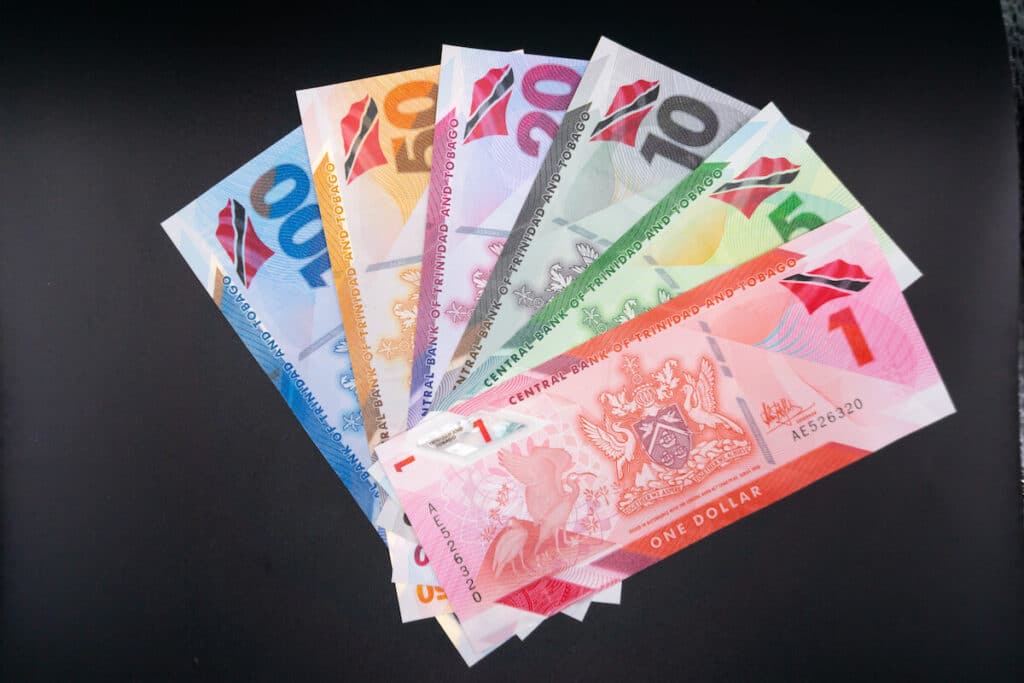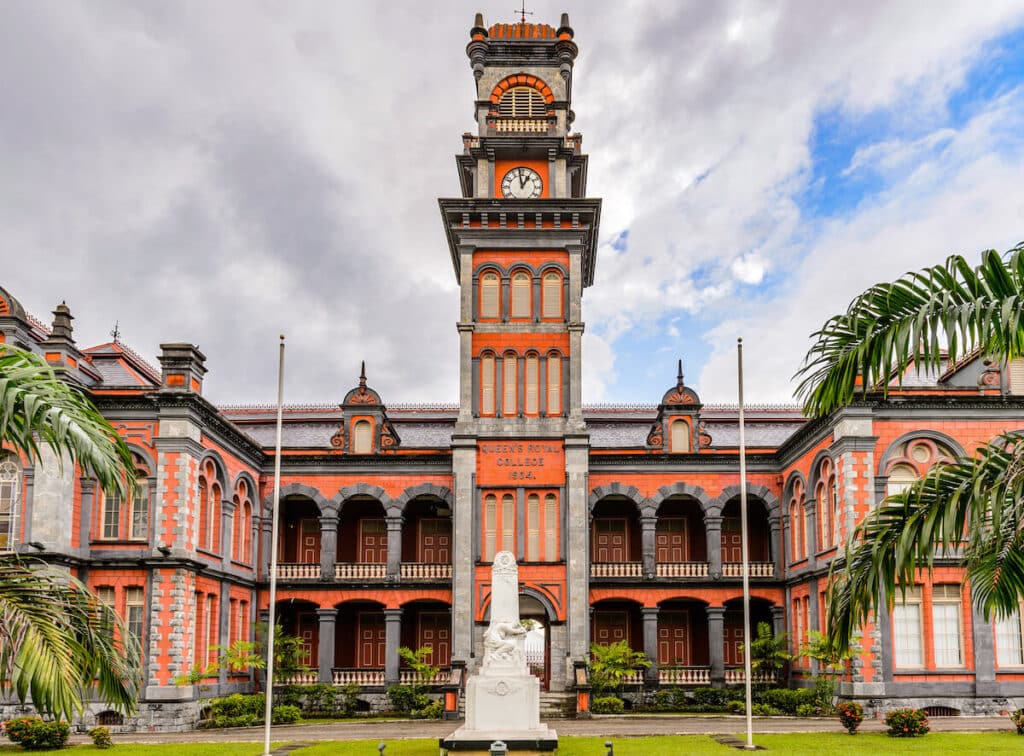Last updated on February 14th, 2024 at 05:14 pm
Located on two islands off the coast of Venezuela, the Republic of Trinidad and Tobago is a regional financial hub in the Caribbean, boasting large natural gas reserves and a stable economy. Fewer tourists travel to these tropical islands, but those who do are drawn to the unspoiled beaches and relaxed pace of life.
Whether you’re vacationing or visiting for business, knowing more about Trinidad and Tobago currency is important. Keep reading this Remitly guide to find out more about Trinidadian currency and this beautiful Caribbean country.
What is the Trinidad currency?
The official currency of Trinidad and Tobago is the Trinidad and Tobago dollar. Like the U.S. dollar, the Trinidadian dollar is subdivided into 100 cents.
You’ll often see the currency of the Trinidad and Tobago monetary system referred to as Trinidadian dollars.
The story of Trinidad’s currency is tied to the history of the nation itself. The first popular currency was the Spanish dollar, which was replaced by the pound sterling under the governance of the United Kingdom through the Colonial Bank.
In the 20th century, Trinidad and Tobago adopted the British West Indies dollar. After independence from Britain in 1967, the country introduced its own currency, the Trinidad and Tobago dollar.
The banknotes have been recently modernized to a tougher polymer blend, replacing the old cotton notes.
The International Organization for Standardization (ISO) currency code is TTD or TT$.
Exchange rates against the U.S. dollar (USD) and other foreign currencies vary, so it’s best to look up the rate on the day you want to exchange.
What do Trinidad and Tobago banknotes and coins look like?
As mentioned, the Caribbean country of Trinidad and Tobago recently revamped its banknotes, switching from cotton to a more durable polymer material.
As of the beginning of 2022, the old banknotes (those dated prior to 2020) are no longer legal tender.
The Central Bank of Trinidad and Tobago in Port of Spain will exchange the old cotton notes for current notes indefinitely, but you will no longer be able to use the notes around the Caribbean islands.
If you previously visited the country and have some of the country’s dollars left over, plan to visit the Port of Spain to make an exchange. You can find its hours and other information here.
The new polymer notes — which come in different colors, making them easily distinguishable from one another — have six different denominations: $1, $5, $10, $20, $50, and $100.
Each banknote features an image of the Central Bank Building of Trinidad and Tobago on one side and the country’s coat of arms on the other. Security features include raised bumps, a clear window, and gold ink.
The coins are known as cents and also feature the Trinidad and Tobago coat of arms on one side. Current coins in circulation are in 5-, 10-, 25-, and 50-cent denominations.

Can I use the U.S. dollar in Trinidad and Tobago?
Although not an official currency, the U.S. dollar is widely accepted across Trinidad and Tobago.
If you’re using U.S. dollars, pay with small bills and expect your change to be in the local Trinidad currency.
The Euro (EUR) and British pound sterling (GBP) may be accepted, but not as often as U.S. currency. Most other currencies will need to be converted to the Trinidadian dollar if you want to make payments in cash during your trip.
Traveler’s checks are not accepted in most places in Trinidad and Tobago. You can exchange traveler’s checks at a licensed foreign exchange center for local currency.
How do I exchange money in Trinidad and Tobago?
There are several ways to convert U.S. currency into local currency in Trinidad and Tobago.
You can exchange foreign currency at a bank or foreign exchange center, withdraw cash from your account using an ATM, or pay for items with a credit card.
Withdrawing cash from an ATM
An easy way to access Trinidad and Tobago dollars is to make a withdrawal from an ATM. You don’t have to carry too much cash by making frequent trips to an ATM.
Many banks have international partnerships with other financial institutions.
Before heading to Trinidad and Tobago, call your bank to find out which ATM network you should use, as this could save you money on fees.
In general, there is a fee for using an out-of-network ATM, plus a currency conversion fee, which is often charged as a percentage of the transaction.
The big four retail banks in Trinidad and Tobago are:
- First Citizen Bank
- RBC Royal Bank
- Republic Bank
- Scotia Bank
In Trinidad, you will find ATMs across the island.
In more rural Tobago, you can find ATMs in Scarborough, Plymouth, Castara, Crown Point, Roxborough, and Charlotteville.
Exchanging currency
The Central Bank of Trinidad and Tobago licenses several bureaux de change centers on the islands to buy and sell currency.
Visit a branch at one of the following businesses in Trinidad to exchange cash for Trinidad dollars:
- Global Exchange Trinidad & Tobago Limited
- Grace Kennedy (Trinidad & Tobago Limited)
- Massy Remittance Servies
- Millenium Finance and Leasing
Global Exchange has three branches within Piarco International Airport in Trinidad — within departures and arrivals at both terminals.
You can also visit one of the four major retail banks and exchange your currency at one of their branches.
As you choose where to get the local currency, keep in mind that rates and fees vary. Often, airport desks charge more and have less favorable rates than other services that allow you to change U.S. dollars and other currencies to Trinidadian legal tender.
Researching before your trip can help you determine the most convenient and affordable place to obtain Trinidadian banknotes once you arrive in the country.
Using a credit card in Trinidad and Tobago
Visa and Mastercard credit cards are widely used throughout Trinidad and Tobago. American Express is also accepted, although not in as many places.
In most situations, using your credit card is a good alternative to carrying cash. It’s common to be asked for ID when paying by credit card, so bring your passport along.
Before using your credit card overseas, find out what fees your provider will charge you. Depending on the card, a fee could be charged as a percentage of the transaction every time you make a purchase.
Using prepaid debit cards in Trinidad and Tobago
If you want to use an ATM but are concerned about using your account abroad, consider loading cash onto a prepaid Visa card instead.
Although fees are connected to using a prepaid Visa card, there is no danger of losing the funds in your checking account if your card is compromised.
Prepaid cards are common in Trinidad and Tobago and are used in the same way as regular debit cards.
Using a money transfer app in Trinidad and Tobago
Transfer money directly to a bank account, or pick up Trinidad and Tobago dollars at a bank branch by sending yourself funds with a money transfer app.
Download a money transfer app like Remitly, load cash directly from your bank account, and transfer the money safely.
You can choose whether to deposit the payment into a bank account in Trinidad and Tobago or collect it via cash pickup.
Using an international money transfer app, you can save on fees and get a fair exchange rate. Download the app before you travel, and pick up the cash a few days later when you arrive in Trinidad and Tobago.

Tips for using a credit card in Trinidad and Tobago
Paying by credit card is convenient. But when using one in Trinidad and Tobago, keep these tips in mind:
- Check first: While credit cards are widely accepted in Trinidad and Tobago, not all restaurants and shops will accept them, or they may only take certain cards like Visa and MasterCard but not Discover and American Express. Call ahead to find out what payment options are available whenever possible.
- Go with local: When making a purchase, you may be given the option to pay in your home currency or in the local currency. It’s better to choose “local currency” as the exchange rates are generally better.
- Notify your financial institution: Tell your credit card company about your travel plans ahead of time. If your provider sees multiple transactions in another country, this raises a red flag for fraud, and your account could be frozen.
- Ask about fees: Check with your credit card company about any foreign transaction fees you may incur from using your card outside your home country.
An easy way to send money to Trinidad and Tobago
Whether you’re buying Trinidad and Tobago currency for a trip or you want to send cash home to your family, it’s important to find a safe and convenient way to exchange your money.
With Remitly, you can send money around the world quickly, safely, and at affordable rates.
